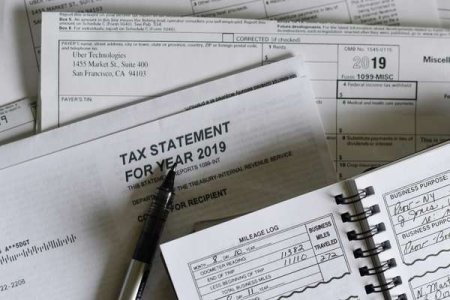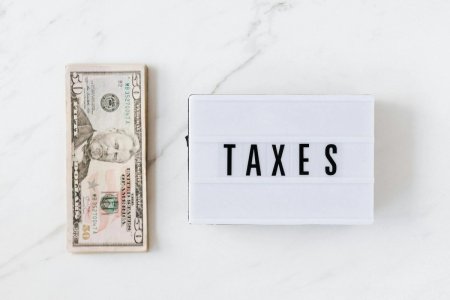Want your tax refund faster than everyone else? Follow this IRS process now!
- Replies 0
Navigating the labyrinth of tax season can be as perplexing as a grand-scale treasure hunt. But unlike the fabled quests of old, the treasure at the end of this modern-day adventure is your very own tax refund.
For many Americans, particularly those of us who have seen a few more tax seasons, the anticipation of receiving that refund check can be both exciting and nerve-wracking. If you're eager to get your hands on your refund before anyone else, you're in luck.
The Internal Revenue Service (IRS) has a not-so-secret formula for speeding up the process, and we're here to share it with you.
While most are focused on how to pay taxes or filling it out, it’s also important to know how to receive your tax refund faster–instead of waiting ages and wondering when you’ll get your money back.
The IRS has embraced the digital age, and so should you. While many have already switched to doing their tax processes online, many continue to file on paper and receive their refunds by mail, which takes a longer time.
“Combining direct deposit with electronic filing is the fastest way to receive your refund. There is no chance that it will not be collected, lost, stolen or destroyed,” remarked the IRS on their website.
This method is the IRS's equivalent of an express lane, bypassing the slower, more traditional paper filing and mailed checks.

E-filing isn't just the IRS's preferred method; it's a boon for taxpayers, too. Here's why:
1. Simplicity at Your Fingertips: Tax software has revolutionized the filing process. It's like having a virtual tax preparer by your side, guiding you through each step, ensuring you don't miss any credits or deductions. It's a far cry from the paper forms of yesteryear, and you don't need to be a tax expert to navigate it.
2. Cost-Effective: If your income falls below a certain threshold, you can file for free through the IRS Free File program. For those with higher incomes, Free File Fillable Forms are an option. Plus, the IRS Volunteer Programs offer free tax preparation and e-filing for those with more complex tax situations, though availability may be limited.
3. Convenience is King: With e-filing, you can submit your tax return from the comfort of your home or on the go with a mobile device. Just ensure you're using a secure connection and device, and remember to protect your information with an Identity Protection PIN (IP PIN) provided by the IRS.
4. Security You Can Trust: The IRS has fortified its digital defenses, employing state-of-the-art encryption and security measures to safeguard your sensitive information against identity theft.
5. Swift Delivery: E-filers who opt for direct deposit can expect their refund within 21 days, a significant improvement over the wait for a paper check.
6. Seamless Payments: If you owe taxes, e-filing allows you to set up an electronic payment from your bank account on a date of your choosing, up to the filing deadline. IRS Direct Pay is another option for scheduling electronic payments, ensuring you avoid penalties for insufficient funds.
The Step-by-Step Guide to a Speedier Refund
Ready to get started? Here's your step-by-step guide to claiming your refund posthaste:
1. Gather Your Documents: Before you begin, make sure you have all necessary tax documents, including W-2s, 1099s, and any other relevant financial records.
2. Choose Your E-Filing Method: Decide whether you'll use the IRS Free File program, Free File Fillable Forms, or a trusted tax software. If you're unsure, consider seeking assistance from the IRS Volunteer Programs.
3. Secure Your IP PIN: If you haven't already, obtain an IP PIN from the IRS to add an extra layer of security to your tax return.
4. File Early: The sooner you file, the sooner you'll receive your refund. Plus, filing early reduces the risk of tax-related identity theft.
5. Opt for Direct Deposit: When prompted, choose direct deposit as your refund method. You'll need to provide your bank account and routing numbers.
6. Double-Check Your Return: Before submitting, review your tax return for any errors. Mistakes can delay your refund.
7. Hit Submit: Once you're confident everything is in order, e-file your tax return.
8. Track Your Refund: Use the “Where's My Refund?” tool on the IRS website or the IRS2Go app to monitor the status of your refund.

Have you tried e-filing and direct deposit for your tax returns? What tips do you have for fellow taxpayers looking to streamline their tax season? Share your experiences and advice in the comments below!
For many Americans, particularly those of us who have seen a few more tax seasons, the anticipation of receiving that refund check can be both exciting and nerve-wracking. If you're eager to get your hands on your refund before anyone else, you're in luck.
The Internal Revenue Service (IRS) has a not-so-secret formula for speeding up the process, and we're here to share it with you.
While most are focused on how to pay taxes or filling it out, it’s also important to know how to receive your tax refund faster–instead of waiting ages and wondering when you’ll get your money back.
The IRS has embraced the digital age, and so should you. While many have already switched to doing their tax processes online, many continue to file on paper and receive their refunds by mail, which takes a longer time.
“Combining direct deposit with electronic filing is the fastest way to receive your refund. There is no chance that it will not be collected, lost, stolen or destroyed,” remarked the IRS on their website.
This method is the IRS's equivalent of an express lane, bypassing the slower, more traditional paper filing and mailed checks.

The IRS encourages taxpayers to file their taxes online and use direct deposit to receive their refunds promptly and securely. Image source: Olga DeLawrence / Unsplash.
E-filing isn't just the IRS's preferred method; it's a boon for taxpayers, too. Here's why:
1. Simplicity at Your Fingertips: Tax software has revolutionized the filing process. It's like having a virtual tax preparer by your side, guiding you through each step, ensuring you don't miss any credits or deductions. It's a far cry from the paper forms of yesteryear, and you don't need to be a tax expert to navigate it.
2. Cost-Effective: If your income falls below a certain threshold, you can file for free through the IRS Free File program. For those with higher incomes, Free File Fillable Forms are an option. Plus, the IRS Volunteer Programs offer free tax preparation and e-filing for those with more complex tax situations, though availability may be limited.
3. Convenience is King: With e-filing, you can submit your tax return from the comfort of your home or on the go with a mobile device. Just ensure you're using a secure connection and device, and remember to protect your information with an Identity Protection PIN (IP PIN) provided by the IRS.
4. Security You Can Trust: The IRS has fortified its digital defenses, employing state-of-the-art encryption and security measures to safeguard your sensitive information against identity theft.
5. Swift Delivery: E-filers who opt for direct deposit can expect their refund within 21 days, a significant improvement over the wait for a paper check.
6. Seamless Payments: If you owe taxes, e-filing allows you to set up an electronic payment from your bank account on a date of your choosing, up to the filing deadline. IRS Direct Pay is another option for scheduling electronic payments, ensuring you avoid penalties for insufficient funds.
The Step-by-Step Guide to a Speedier Refund
Ready to get started? Here's your step-by-step guide to claiming your refund posthaste:
1. Gather Your Documents: Before you begin, make sure you have all necessary tax documents, including W-2s, 1099s, and any other relevant financial records.
2. Choose Your E-Filing Method: Decide whether you'll use the IRS Free File program, Free File Fillable Forms, or a trusted tax software. If you're unsure, consider seeking assistance from the IRS Volunteer Programs.
3. Secure Your IP PIN: If you haven't already, obtain an IP PIN from the IRS to add an extra layer of security to your tax return.
4. File Early: The sooner you file, the sooner you'll receive your refund. Plus, filing early reduces the risk of tax-related identity theft.
5. Opt for Direct Deposit: When prompted, choose direct deposit as your refund method. You'll need to provide your bank account and routing numbers.
6. Double-Check Your Return: Before submitting, review your tax return for any errors. Mistakes can delay your refund.
7. Hit Submit: Once you're confident everything is in order, e-file your tax return.
8. Track Your Refund: Use the “Where's My Refund?” tool on the IRS website or the IRS2Go app to monitor the status of your refund.
Key Takeaways
- The IRS encourages taxpayers to file their taxes online and use direct deposit to receive their refunds promptly and securely.
- Online tax filing is portrayed as an easy, safe, and potentially free way to file taxes, guided by tax software that ensures completeness and accuracy.
- For those who qualify, free tax preparation and filing assistance are available through the IRS Free File program and IRS Volunteer Programs.
- Those who file electronically with direct deposit can typically expect to receive their tax refund in less than 21 days, which is faster than waiting for a paper check.
Have you tried e-filing and direct deposit for your tax returns? What tips do you have for fellow taxpayers looking to streamline their tax season? Share your experiences and advice in the comments below!






